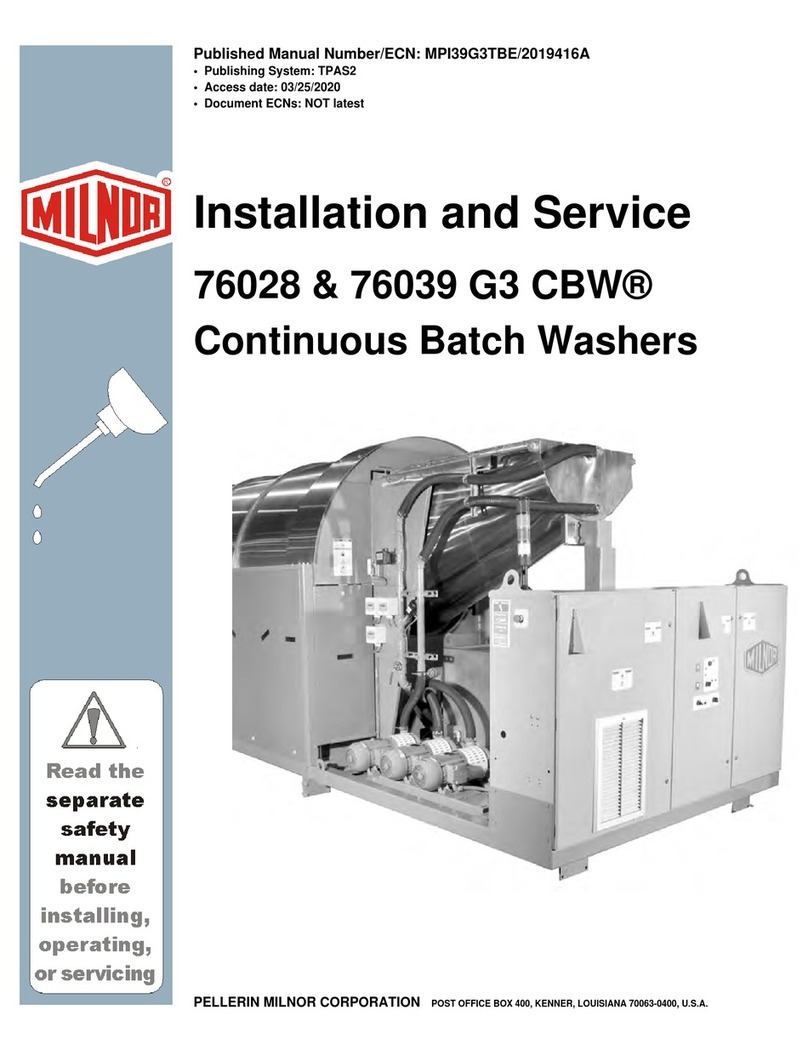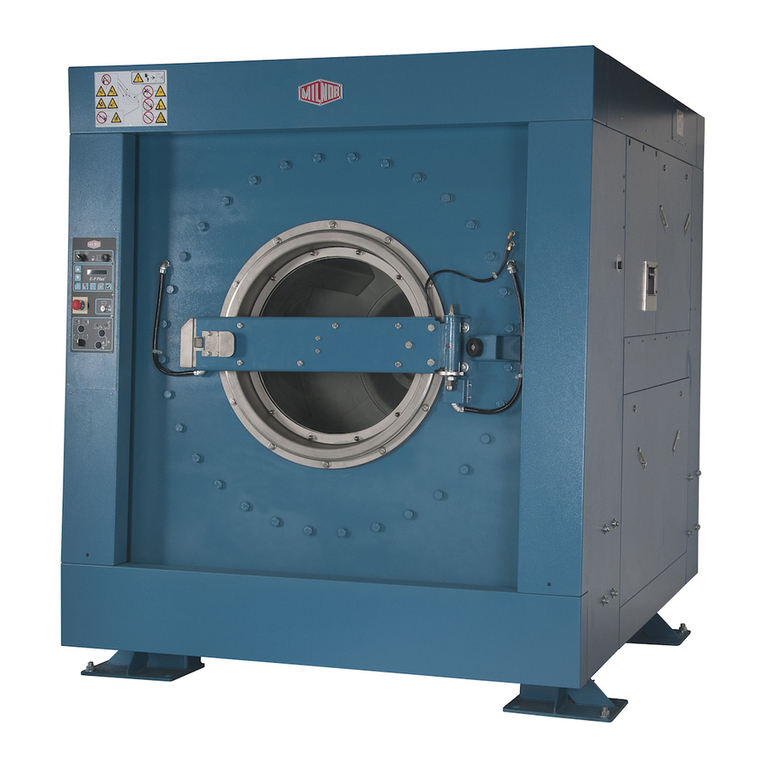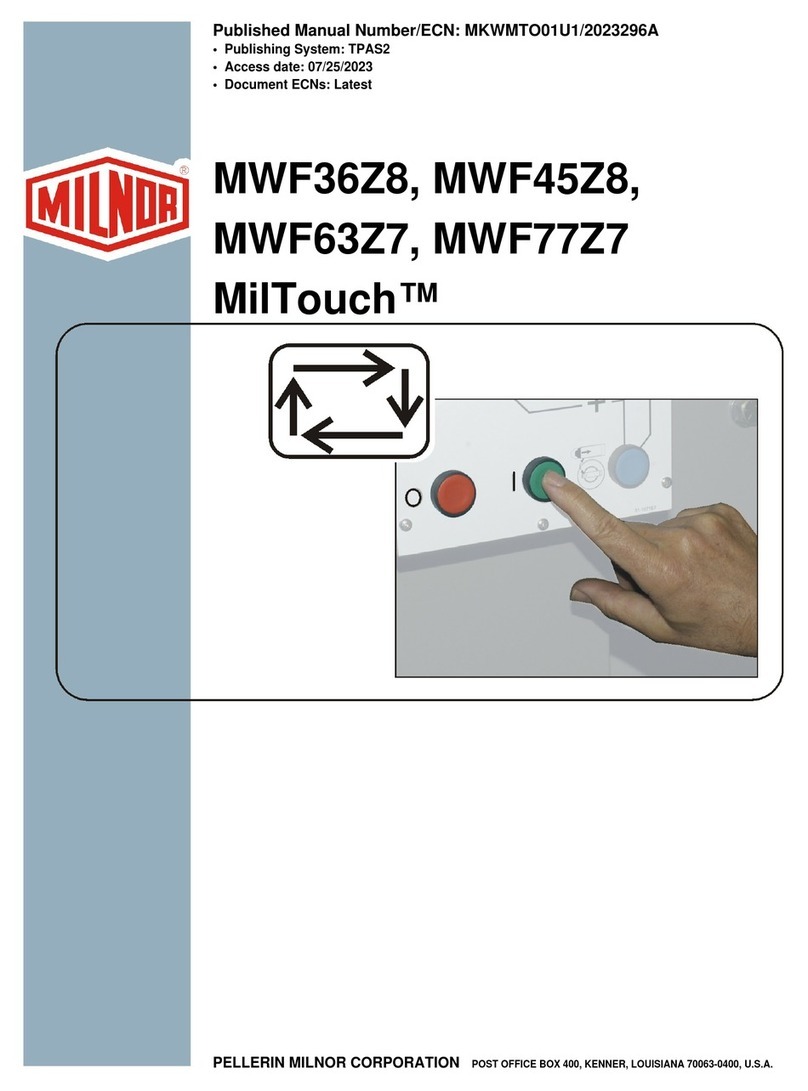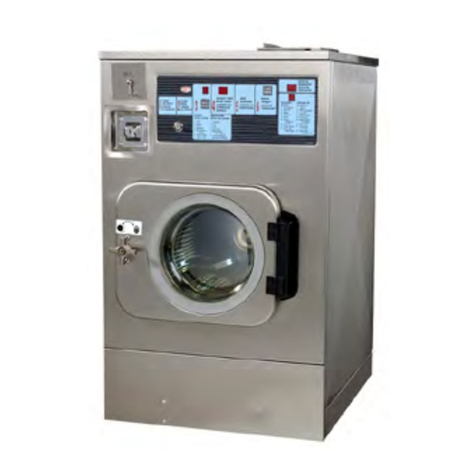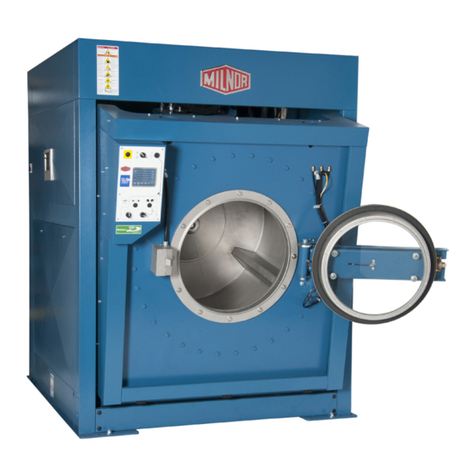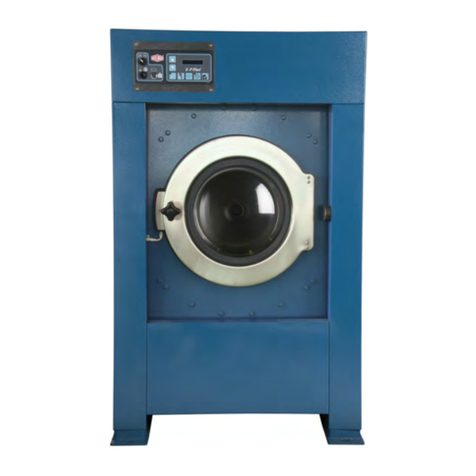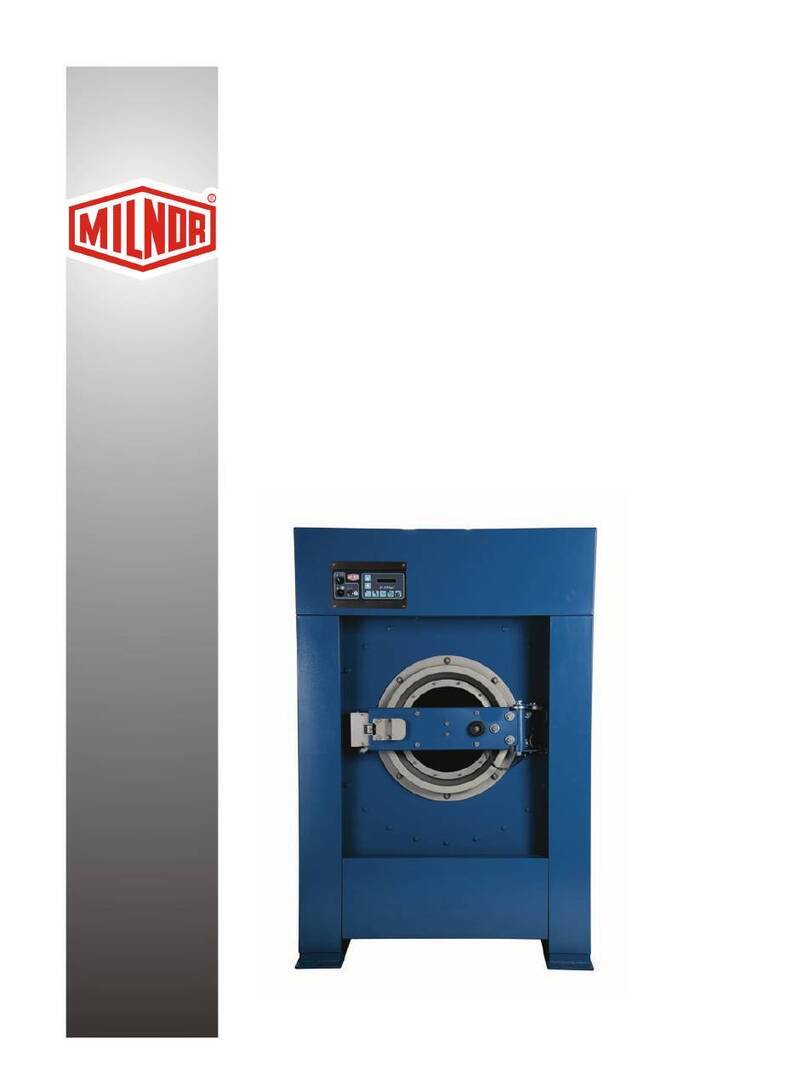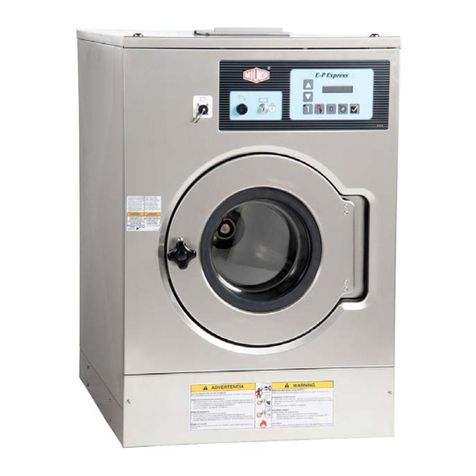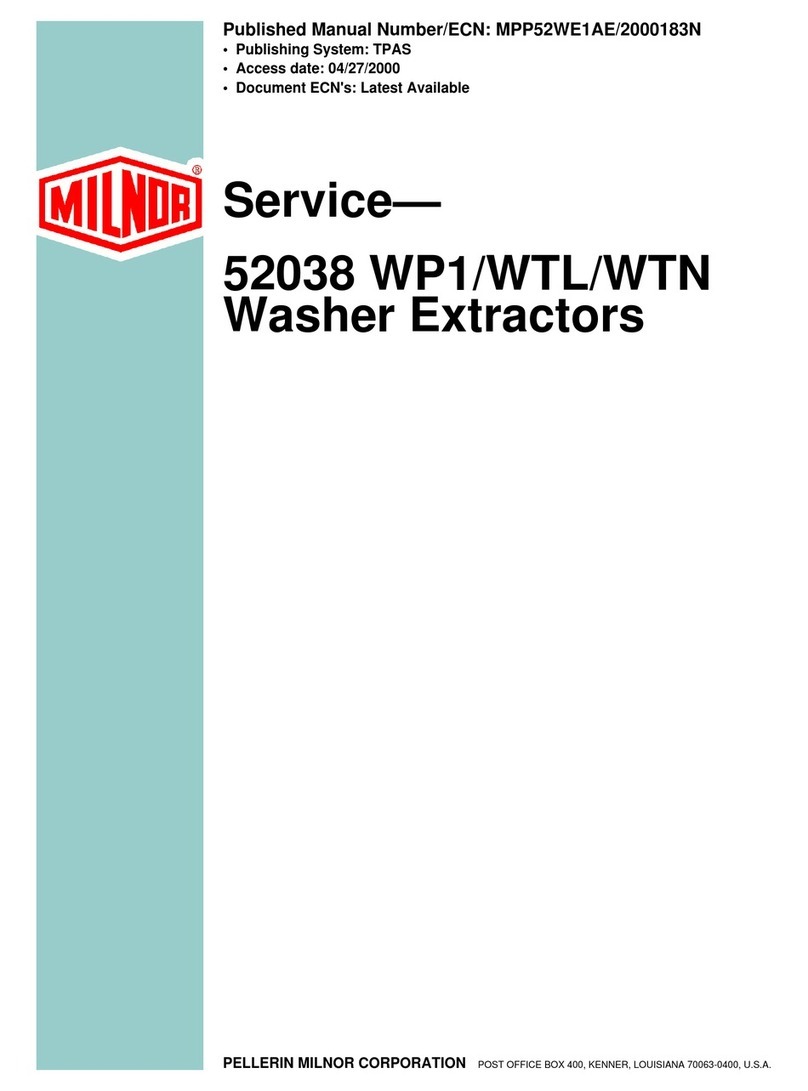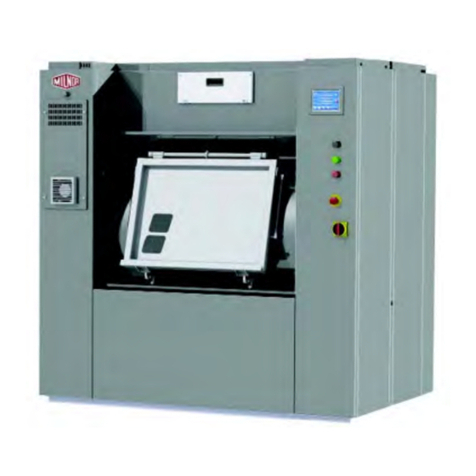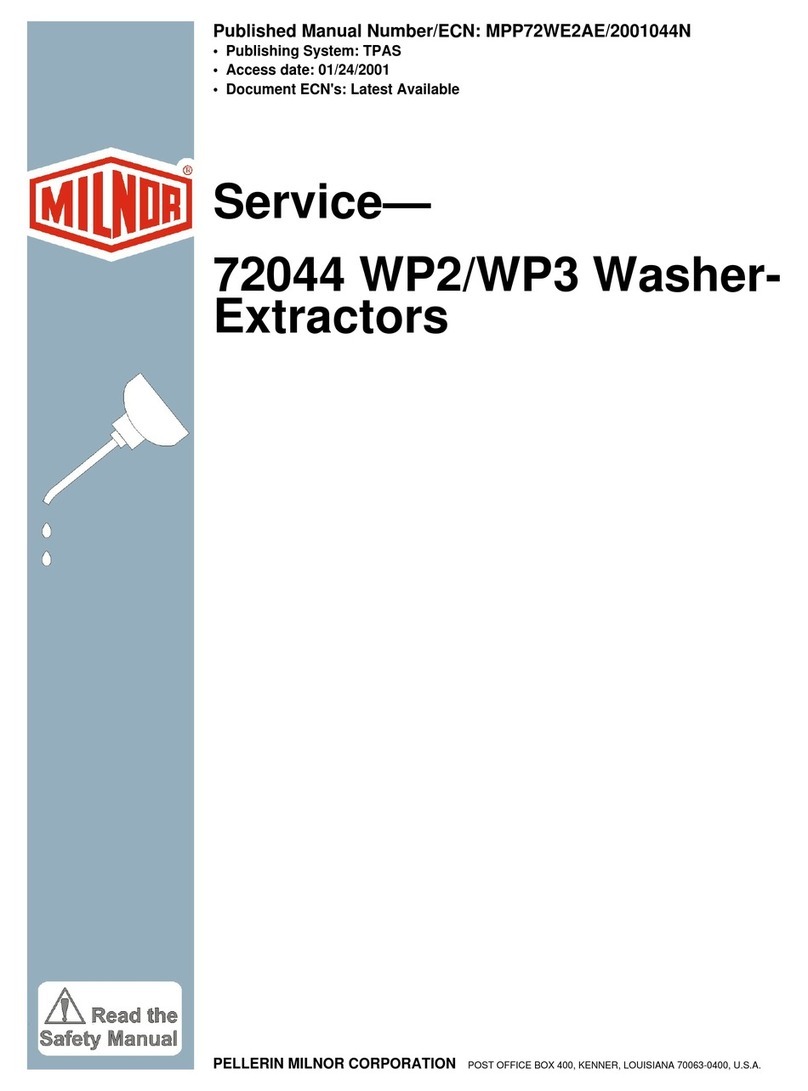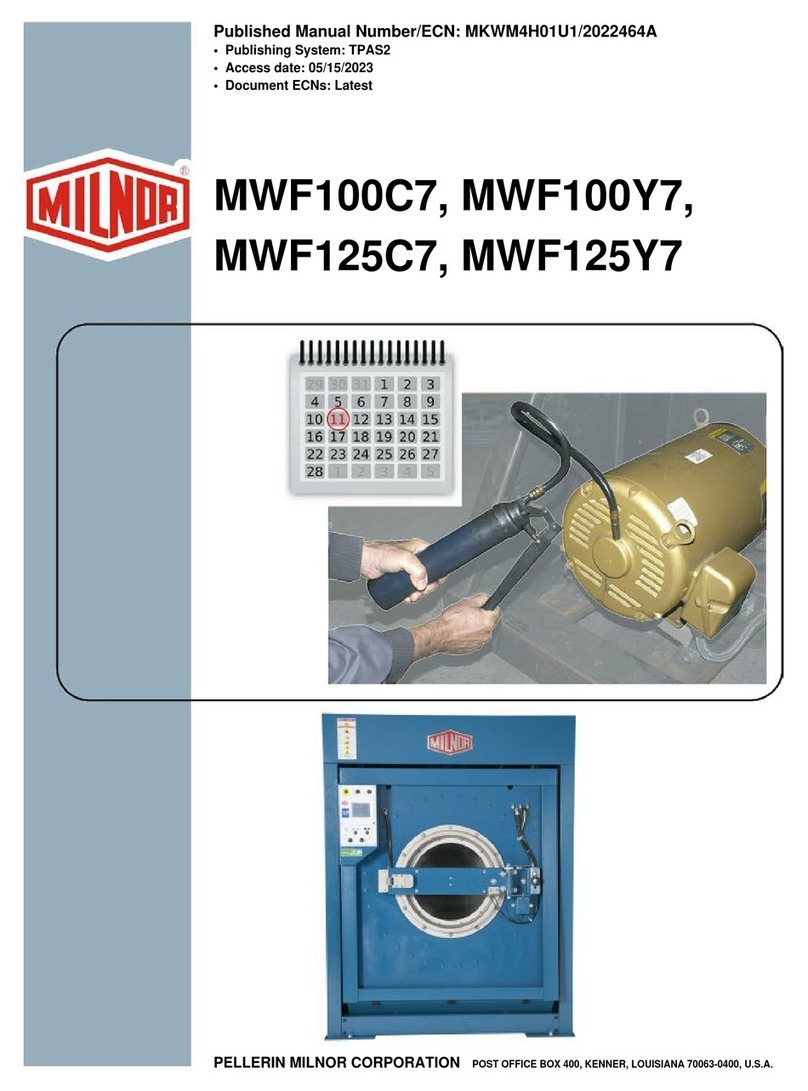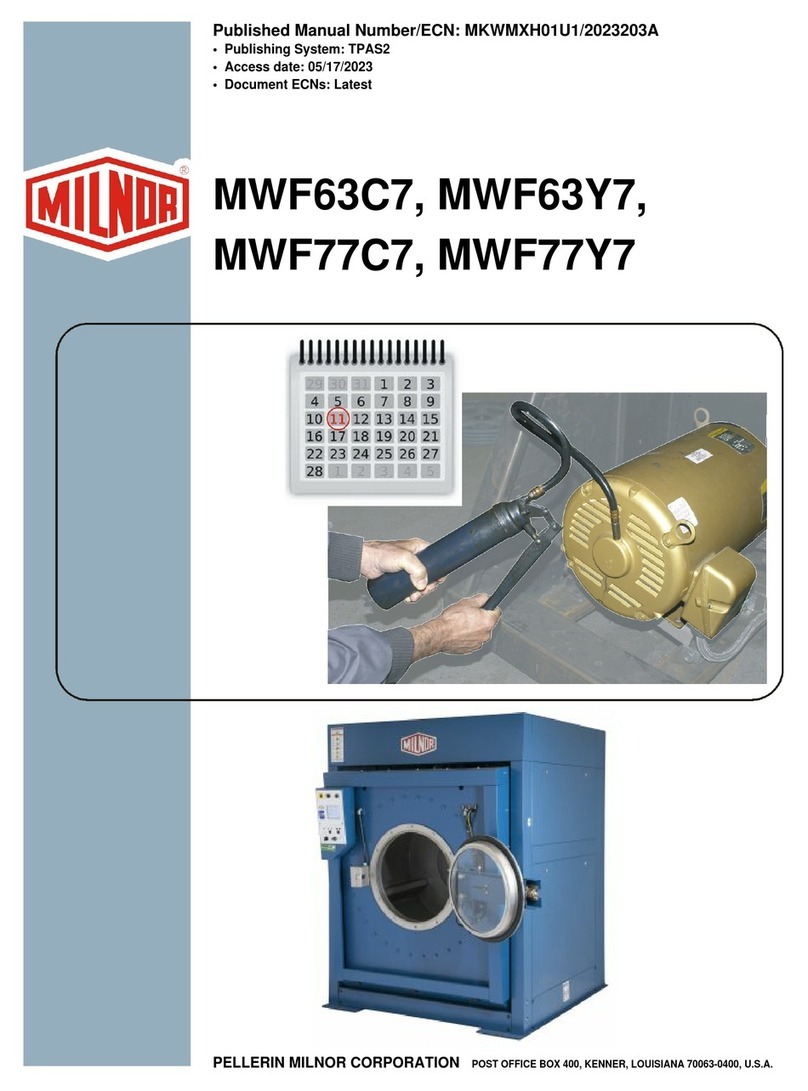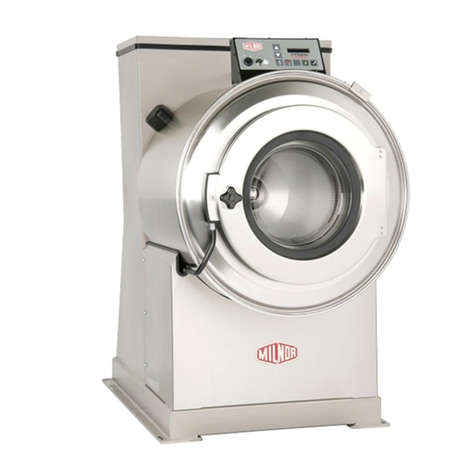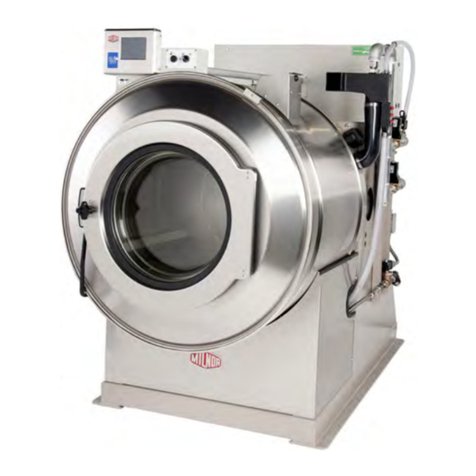
Table of Contents
for ME6Q7JG1AE/92173N
Q4, 6, 7J and Q4, 6, 7G
Page Description Document/ECN
1 Warranty BMP720097/92732A
3 How to Order Parts BMP720097R/72332A
4 Fuse/Circuit Breaker and Wire Sizing MSSM0118AE/9330AV
6 External Fuse & Wire Sizes for Washer Extractors:
36026RWP/RWE, M7G, 36021RWP/RWE, M7G BMP850042/91266V
7 External Fuse & Wire Sizes for Washer Extractors:
30020M7G, M7J, M7P, 36021Q6G, Q6J, Q6P,
36026Q6G, Q6J, Q6P, 42026Q4G, Q4J, Q4P BMP900039/94503V
8 External Fuse & Wire Sizes for Washer Extractors:
36021BWP, CPE, NSP, Q7G, Q7J, Q7P, 36026Q7G,
Q7J, Q7P, 42026Q6G, Q6J, Q6P BMP900040/94503V
9 Safety Instructions for Washer-Extractor Operation MSOP0205AE/9322CV
14 Drawing Identification - Forms and Format WWTBIFF/87082F
16 Drawing Identification - Forms and Format (continued) WWTBIFF-R/86466F
18 Board to Board Wiring W7Q7JBW/93356D
20 Parts List for W7Q7JBW W7Q7JBW-R/91412N
21 Cool Down W7Q7JCD/90452C
22 Parts List for W7Q7JCD W7Q7JCD-R/90452N
23 Flushing Supplies W7Q7JCF/91333C
24 Parts List for W7Q7JCF W7Q7JCF-R/90337N
25 Alternate Drain Valve W7Q7JDR/91426C
26 Parts List for W7Q7JDR W7Q7JDR-R/91426N
27 Electric Clutches for 36" & 42" Q4G, J Machines W7Q7JEC/90337C
28 Parts List for W7Q7JEC W7Q7JEC-R/90337N
29 Electric Valves W7Q7JEV/90337C
30 Parts List for W7Q7JEV W7Q7JEV-R/90337N
32 Microprocessor Inputs W7Q7JI1/91333D
34 Parts List for W7Q7JI1 W7Q7JI1-R/91031N
35 Microprocessor Inputs W7Q7JI2/90452C
36 Parts List for W7Q7JI2 W7Q7JI2-R/90452N
37 Control Circuit Transformer W7Q7JLV/91251C
38 Parts List for W7Q7JLV W7Q7JLV-R/91251N
39 Motor Contactors for 3621, 3626 Q6 and 4226
Q4, Q6 Machines W7Q7JMC/90492D
40 Parts List for W7Q7JMC W7Q7JMC-R/90337N
41 Motor Contactors for 3621, 3626 Q4 Machines W7Q7JMD/90492D
42 Parts List for W7Q7MD W7Q7JMD-R/90483N
43 Motor Connections for 3621, 3626 Q6 and 4226
Q4, Q6 Machines W7Q7JMTR/90337D
44 Parts List for W7Q7JMTR W7Q7JMTR-R/90337N

